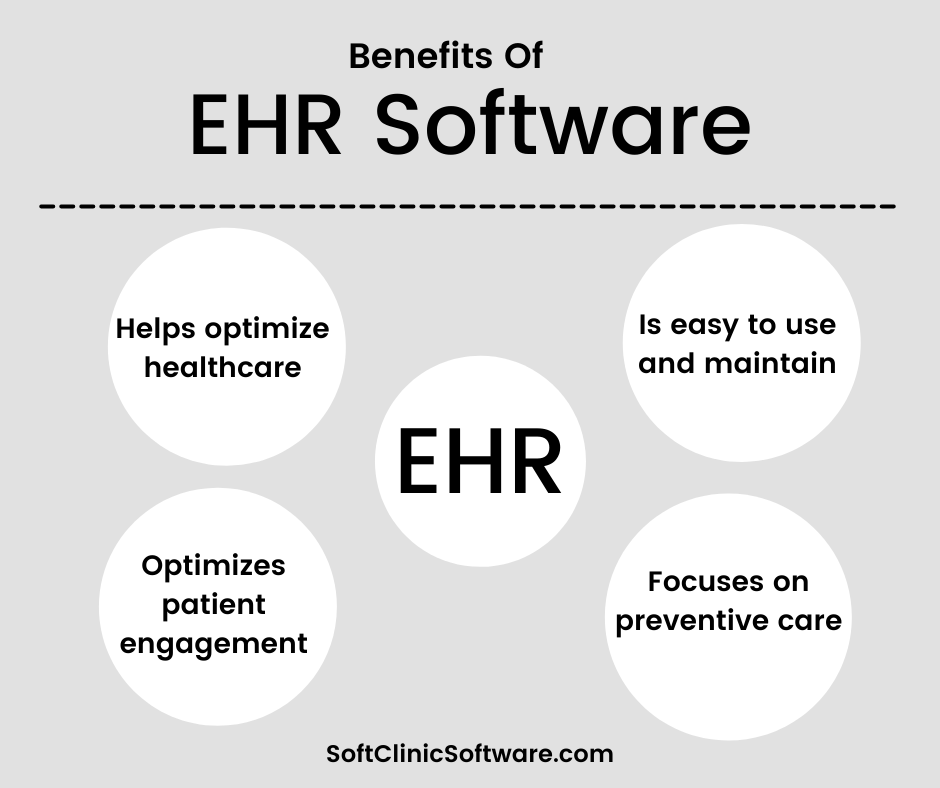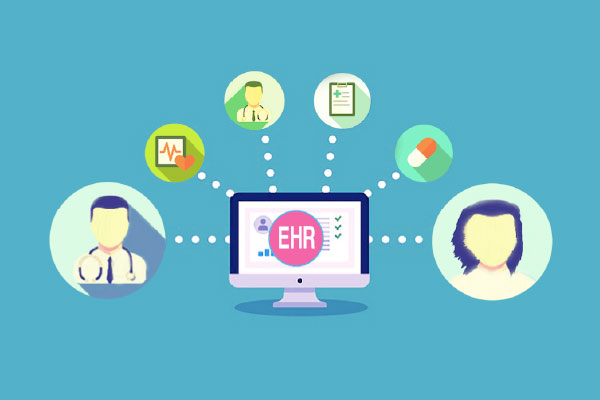How to best use the EHR data for better patient care?”
February 12, 2022Electronic health records, popularly known as EHR have proven to be an efficacious method of taking patient files from paper to computer. Although they have done a wonderful job of securely collecting and storing patient data, EHR software has consistently been improving over the years to surpass more than just records and files.
Information technology used in medical establishments over the world has become an indispensable tool for medical professionals. Going beyond just storing data, EHR has evolved into resources that help doctors and other health providers communicate data to colleagues, patients, and other specialists. This is popularly known as interoperability in Healthcare.
Why is EHR soaring in popularity year by year?
The valuable insights that some EHR software provides help with clinical decision-making and speculation by giving the doctors the overall picture when it comes to the health backgrounds of the patient and treatment options.
The meaningful and resourceful patient data within EHR software has the potential to positively contribute to public health outcomes. Electronic health records enable health service providers to deliver optimum patient care. It also helps them achieve clinical benefits for the practice itself.
The goal is to have patient information available to anyone who needs it, when they need it and where they need it. With an EHR, lab results can be retrieved much more quickly, thus saving time and money.

How does EHR help optimize healthcare?
With technology that provides valuable insights into a patient’s medical history and multiple data files, doctors and clinics are better equipped to treat patients and meet their expectations. These readily available resources streamline time-consuming processes and contribute to easier clinical decision-making.
The more medical professionals have secure access to a patient’s vital health information, the better chances they have of getting them treated properly and in a timely manner.
Ways to use Electronic health records (EHR)to enhance patient care:
To Optimize patient engagement
Electronic health record software provides a crucial means to bridging patient and healthcare provider communication. Their coordinated tools not only help practices and staff in their daily workflows but also positively contribute to better patient satisfaction.
Optimized patient portals allow patients to schedule their appointments, get relevant information, and so on. This not only eliminates workload for staff and frees up phone lines, but also provides patients with a quick way to book an appointment with their service provider.
This technological way of scheduling often comes in handy and is paired with automated confirmations and reminders.
To make the lives of the patients easier
These systems make the lives of patients and health workers easier and more convenient. Another popular form of customer engagement is the ease of information transfer.
The issue with bombarding patients with an overload of information during the visit is the misconception that providers have of the patient’s understanding. Having the ability to share this resourceful information through a portal ensures patients can read important documentation in their own time.
The ability to send electronic prescriptions also influences patient satisfaction as they can make their way to their preferred pharmacy whenever needed. This will also contribute to reducing medication errors that can have potentially life-threatening consequences.
To educate patients regarding their health journey
The more a patient understands their health journey, and the better educated they are about it, the better their chances of complying with the recommendations made by their health provider.
Keeping patients well-informed throughout the process and making it as painless as possible, the more likely they are to be engaged and satisfied.
To focus on preventive care
The evolution of electronic health records has resulted in a powerful tool that aids providers in managing preventable diseases in a better way.
With the ability to identify patients who have not yet gotten important screening examinations done, doctors can stay on top of their patient’s health. Through their EHR, they can transfer automated templates inciting patients to schedule and book appointments for important screenings such as colonoscopies, mammograms, CT scans, and so on.
These preventive measures can help detect early signs of life-threatening ailments such as breast cancer, colon cancer, and so on. EHR software equips providers with tools that identify patient risks and behaviors, positively contributing to preventive care.
Receiving reminders for important screening they might not have thought about on their own helps patients educate themselves and better manage potential health risks. Identifying an ailment ahead of time can save a life and even prevent additional ailments.
Recommended Read: How AI & ML are helping in efficient healthcare management?
For Effective data management
Effective data management ultimately means tighter financial control. Transforming data into actionable information strengthens cost-control measures.
Accumulating and analyzing specific data enables clinical workers to identify workflow deficiencies, implement corrective procedures, and track performance changes.
Monitoring performance, and adjusting policies when necessary, support the overall financial fitness of medical organizations.
To Identify and analyze the behavioral habits of the key stakeholders
Identifying and analyzing the behavioral habits of the key stakeholders with the help of EHR software enables efficient communication.
Determining which information sources most substantially impact your practice is instrumental in developing an effective communication stage. Tablets and mobile applications enable access to clinical analytics while allowing doctors to maintain in touch.
Mobile compatible Electronic Health Records software supports reminders and scheduling via text. However, EHR abilities have the potential to encourage patients to embrace behavior modification and compliance through customized/personalized messages, alerts, and clinical information sharing throughout the care team.
Diving deeper into the data analytics may reveal population behavior patterns to aid clinical workers refine communication methods,
To make use of Real-time data to facilitate well-informed decisions
Data analytics allow health workers to include everyone in the circle of influence from program staff and clinicians to patients and primary caregivers.
Incorporating clinical observation and patient records into the mix provides a comprehensive view of the patient’s environment and influencing factors. Organized clinical data provides medical providers access to information quickly.
In routine and emergency situations, physicians can access a comprehensive medication profile, review recent test results and health status changes, and identify gaps in care that may be contributing to poor outcomes. Centralized records usually reduce costs for patients as well as providers and make the patient experience seamless.
Conclusion
We hope this article helps you make well-informed choices and incorporate EHR data in your medical service operations. EHR makes the lives of medical professionals convenient and helps store accurate data and data analytics.

0 Comments